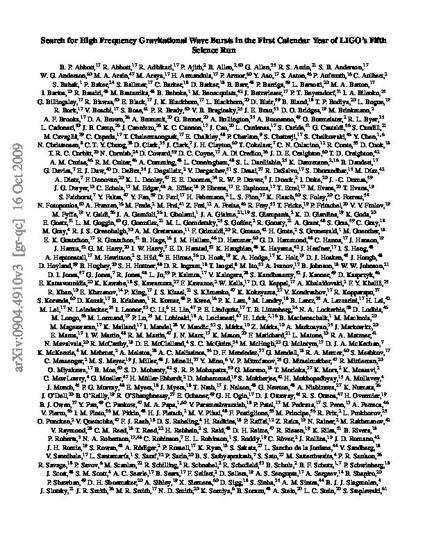
Article
Search for High Frequency Gravitational-wave Bursts in the First Calendar Tear of LIGO's Fifth Science Run
Physical Review D - Particles, Fields, Gravitation and Cosmology
Document Type
Article
Publication Date
11-11-2009
Disciplines
Abstract
We present an all-sky search for gravitational waves in the frequency range 1 to 6 kHz during the first calendar year of LIGO's fifth science run. This is the first untriggered LIGO burst analysis to be conducted above 3 kHz. We discuss the unique properties of interferometric data in this regime. 161.3 days of triple-coincident data were analyzed. No gravitational events above threshold were observed and a frequentist upper limit of 5.4year-1 on the rate of strong gravitational-wave bursts was placed at a 90% confidence level. Implications for specific theoretical models of gravitational-wave emission are also discussed. © 2009 The American Physical Society.
DOI
https://doi.org/10.1103/PhysRevD.80.102002
First Department
Physics
Acknowledgements
Retrieved March 5, 2021 from https://arxiv.org/pdf/0904.4910.pdf
Citation Information
B. P. Abbott, R. Abbott, R. Adhikari, P. Ajith, et al.. "Search for High Frequency Gravitational-wave Bursts in the First Calendar Tear of LIGO's Fifth Science Run" Physical Review D - Particles, Fields, Gravitation and Cosmology Vol. 80 Iss. 10 (2009) Available at: http://works.bepress.com/tiffany_summerscales/209/
